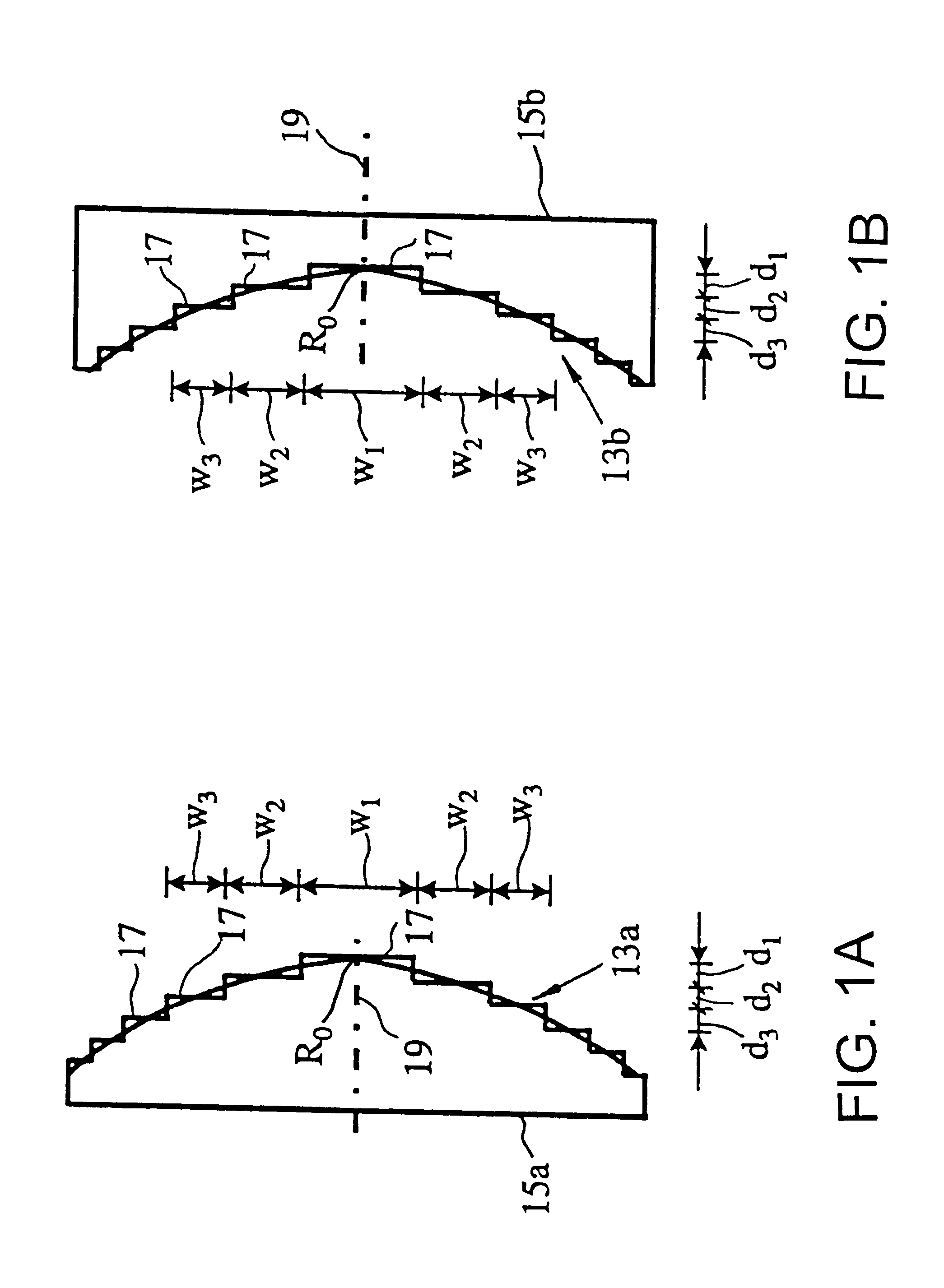Optical systems employing stepped diffractive surfaces
a diffractive surface and optical system technology, applied in the field of optical systems employing stepped diffractive surfaces, can solve the problems of reducing the ability to control the change in the optical properties of the system with a change in temperature, reducing the ability to athermalize the refractive system composed of these materials with a kinoform, and providing a ray tracing techniqu
- Summary
- Abstract
- Description
- Claims
- Application Information
AI Technical Summary
Benefits of technology
Problems solved by technology
Method used
Image
Examples
example
FIG. 3A shows a refractive singlet having surfaces S1 and S2. The prescription for this lens is set forth in the first column of Table 2, where surface S2 is defined by the equation: ##EQU29##
where "r" is a radial coordinate measured from the lens' optical axis and "z" is the surface's sag.
The calculated thermal behavior of the lens of FIG. 3A is shown in FIG. 4A, where PX and PY are pupil (stop) coordinates and EX and EY are field coordinates. For perfect imaging, all rays go to the axis so that EX and EY are zero for all PX and PY values.
As shown in FIG. 4A, the refractive singlet of FIG. 3A achieves perfect imaging at 20.degree. C., but exhibits significant amounts of defocus as the temperature is increased to 45.degree. C. and 700.degree. C., the amount of defocus being proportional to the temperature change.
FIG. 3B shows an athermal hybrid singlet constructed in accordance with the invention. The prescription for this lens is set forth in the second column of Table 2. As shown ...
PUM
 Login to View More
Login to View More Abstract
Description
Claims
Application Information
 Login to View More
Login to View More - R&D
- Intellectual Property
- Life Sciences
- Materials
- Tech Scout
- Unparalleled Data Quality
- Higher Quality Content
- 60% Fewer Hallucinations
Browse by: Latest US Patents, China's latest patents, Technical Efficacy Thesaurus, Application Domain, Technology Topic, Popular Technical Reports.
© 2025 PatSnap. All rights reserved.Legal|Privacy policy|Modern Slavery Act Transparency Statement|Sitemap|About US| Contact US: help@patsnap.com



